Bill Holmes - Activities - Hiking and Biking - Central America - Guatemala - Tikal
Sunrise at TikalThe classic name of Tikal is Mutul, which was founded in 16. Within it's six square miles are 3,000 structures with a population of about 45,000 supplied by at least ten reservoirs. Temple IV is 229 ft. high.
In 636, Cakakmu's Yuknoom the Great attacked Tikal, and established hegemony over several Tikal cities.
In 695, Yich'aak K'ahk (fiery claw) defeated Calakmul.
The Maya were a class society of nobles (clergy, warriors and wealthy farmers and merchants), free workers, serfs and slaves controlled by a hereditary elite and clergy likely introduced by the Toltecs.
The first name came from the mother; the second from the father. There were 250 patrilineal lines at the conquest through which property was inherited. Marriage was always outside the lineage.
Intertribal conflict over borders and lineage honor were constant.
The Mayan winners of a ball game got the clothing of the opposing team and those of the audience.
Slightly crossed eyes were held in high esteem, so parents hung small beads over the nose of their children.
There was no afterlife for the Maya. The ordinary dead were buried beneath the house floor with their mouths filled with food and a jade bead. Great nobles were cremated.
To Mesoamericans, time is not linear. It is cycles of creation and destruction. Maya are known for zero and their astronautical prowess, which led to their remarkable calendar. The Gregorian calendar did not appear until 1582.
In 682, the scribes of Copan began correlating the lunar and solar cycles with the formula 149 moons = 4,400 days. It's 29.53020 is remarkably close to the actual value of 29.53059. Their Venus cycle is 584 days. The actual value is 583.92.
Unlike the clumsy, additive numbers used by the Romans and many other cultures, the position of Mayan number symbols determines their value, so a limited number of symbols is sufficient to express large numbers. Value increases from bottom to top in steps of 1, 20, 400, etc., e.g. 20 is written with a naught in the lowest place and a dot in the second. There are no fractions.
Their Earth was flat and four cornered with a color for each cardinal point: white for north, red for east, yellow and black for west with blue-green in the middle. The sky is held up at each corner by different gods or trees.
Their pantheon is populated by at least 166 gods. Each had a consort of the opposite sex, a reflection of Mesoamerican dualism, which included young and old, fleshed and fleshless, human and animal and astronomical and underworld aspects.
Into the vacuum created by the collapse of the older Mayan civilizations moved the Toltecs, who brought idolatry and human sacrifice. In 987, the Toltecs of Tula invaded Yucatan and established it's capital at Uukil-abnal. In addition to it's massive temple named Castillo, it had structures east to the coast for trade.
The Toltecs were eventually accepted as natives of Yucatan, but the Itza were always despised Itza (Putun). Driven from Champoton on the coast of Campeche circa 1200 , the Itza temporarily settled near Lake Peten Itza and the eastern shores of Belize before they squatted in the desolate Uukil-abnal, under the guise of the great Toltec K'uuk'ulkan. The city became as "the mouth of the well of the Itzu" or "Chichen".
In 1263 the Itza founded Mayapan, which became the capital of Yucatan in 1283. Within it's walls native Mayans were packed in an urban anarchy.
In 1441-61, the Itza were driven from Chichen Itza to Lake Peten Itza, where they founded Tah Itza, called Tayasal by the Spanish on the island now called Flores, Guatemala.
Drawn north for gold, and resisted by Maya fighting in the guerrilla tradition, the Spaniards did not establish a capital in the region at Merida until 1542, but fighting continued with revolutions in 1712, 1847, 1860, 1868 and 1994. Few have converted to the cross.
Tikal Map
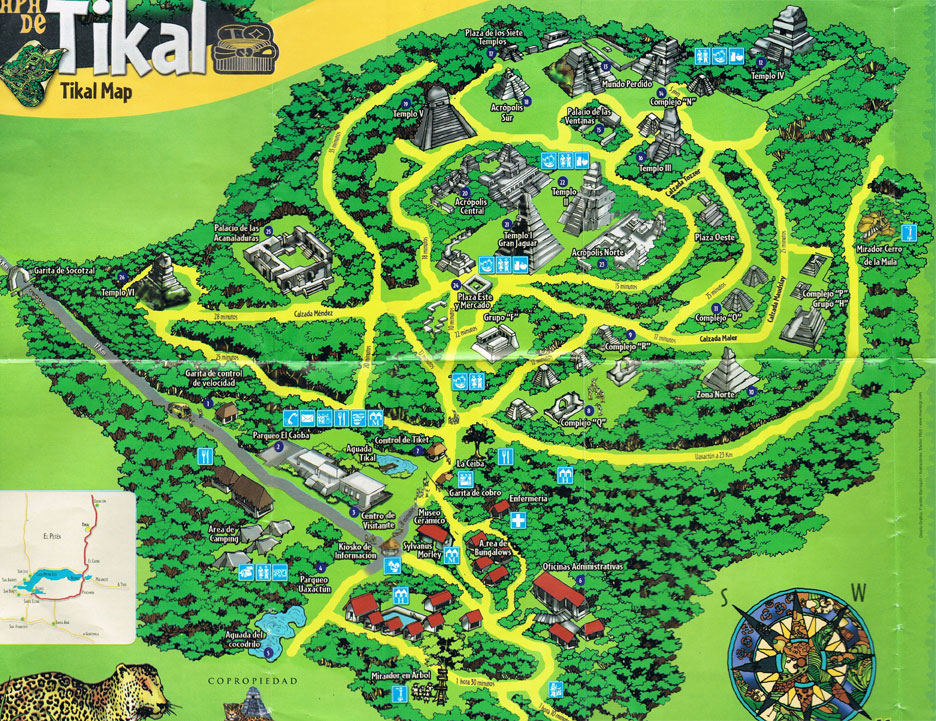
Tikal ruins
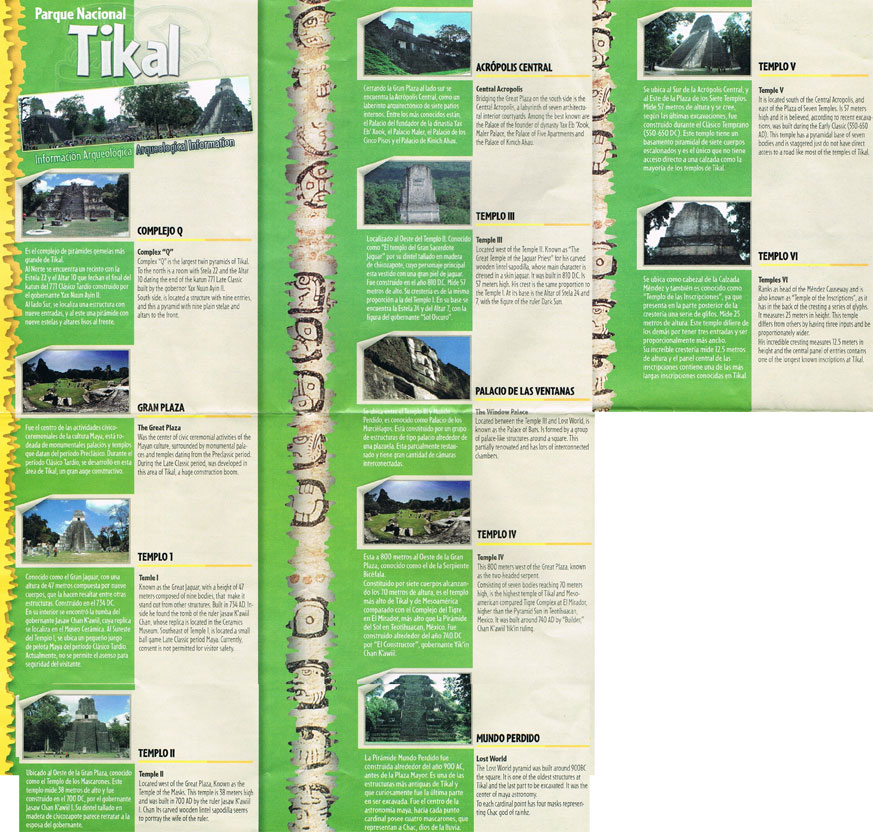
The Tikal tour continues after descending steep stairs down Temple IV (12)
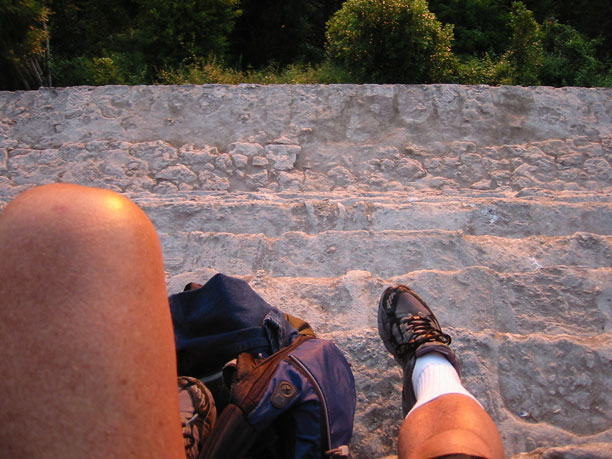
Lightening struck the top of Temple IV (12) and revealed hollow structures that had to be reinforced.
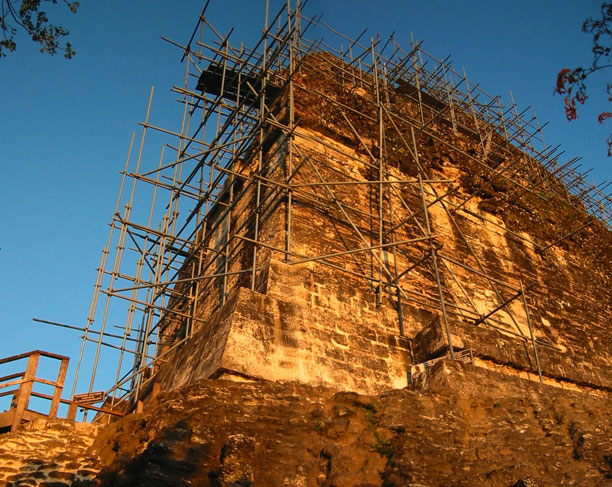
Alter
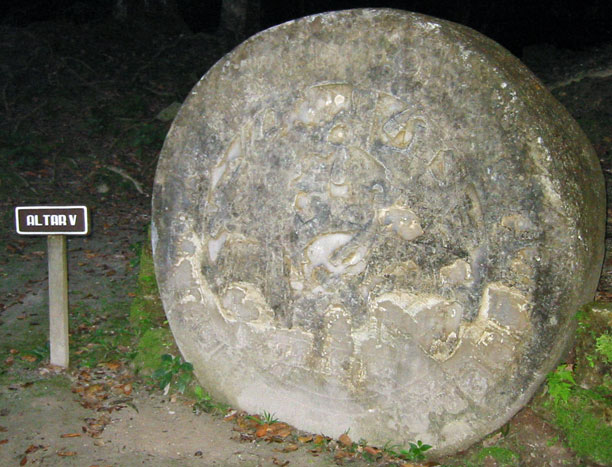
Stella and guide Earnie (Ernesto). These are not thought to describe the rule of a single ruler rather than gods.
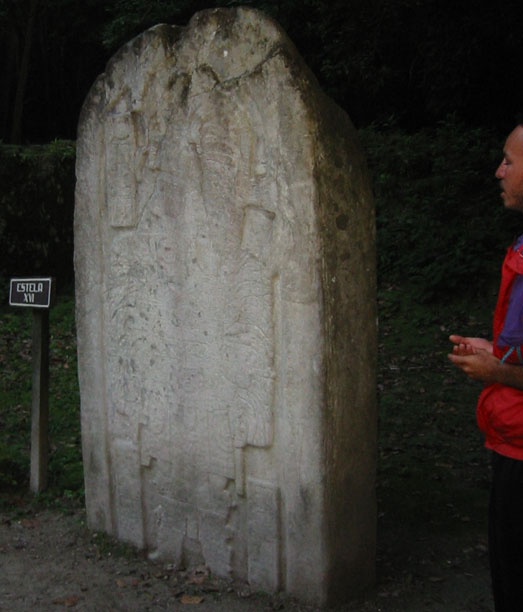
Temple IV(12) from below
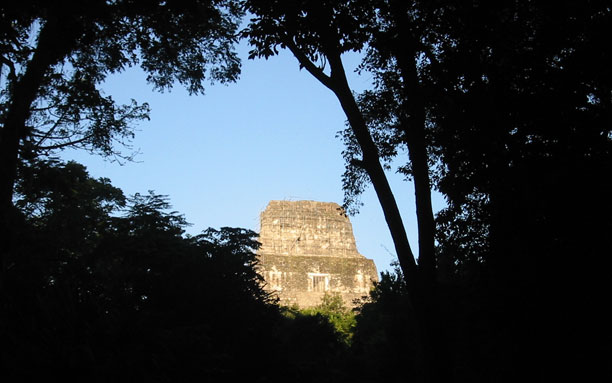
Palace of the windows (15) panorama
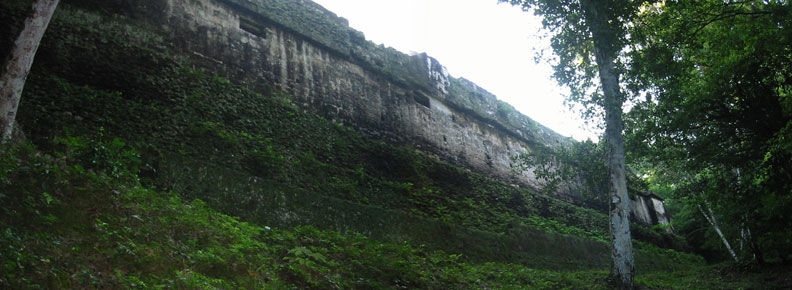
Howler monkey
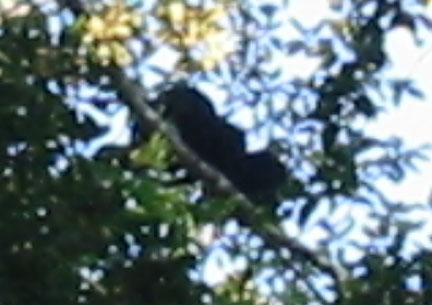
While leading the pack so I could hear the guide, I saw a wild boar on the path ahead. I signaled to the guide. Unfortunately, the others pressed forward and spooked the boar before I could get my camera out and on. All that can be seen here is the reflection from its eye. The guide said such sightings were vary rare. This was the first he had seen in twenty years.
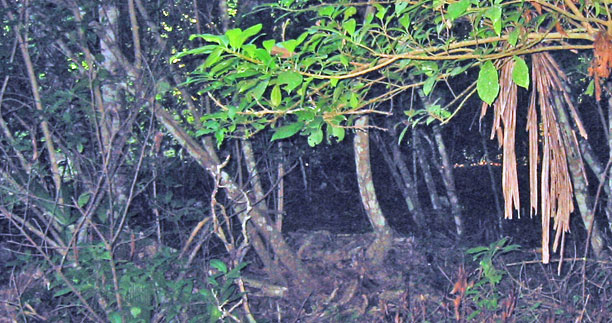
Temple IV (12) from distance

Mundo Perdido (13)
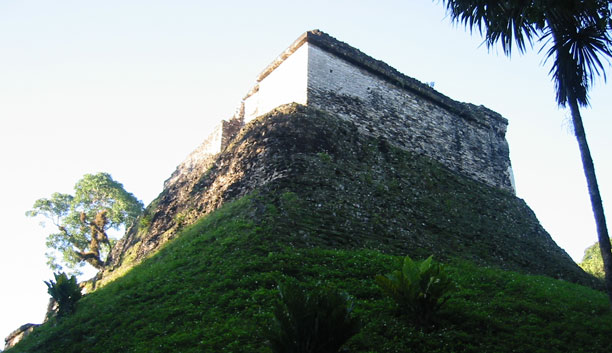
Complejo N (14) lower temple?
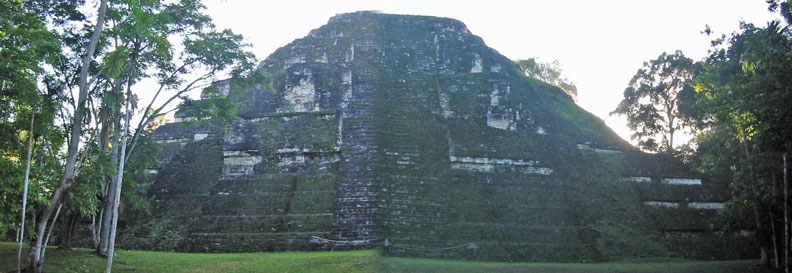
Temple
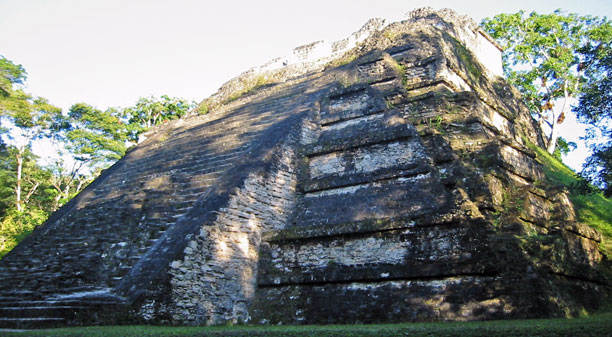
Twisted Temple III (16) or North Zone (10) seems to have been adjusted during construction for better star/planet alignment
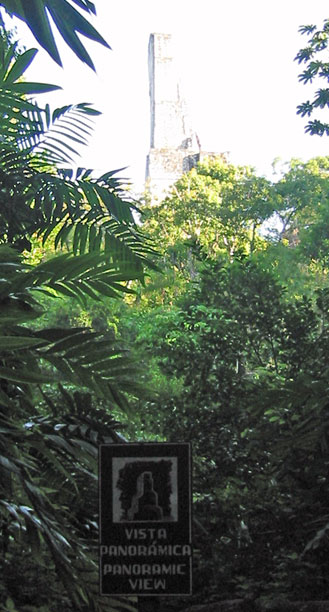
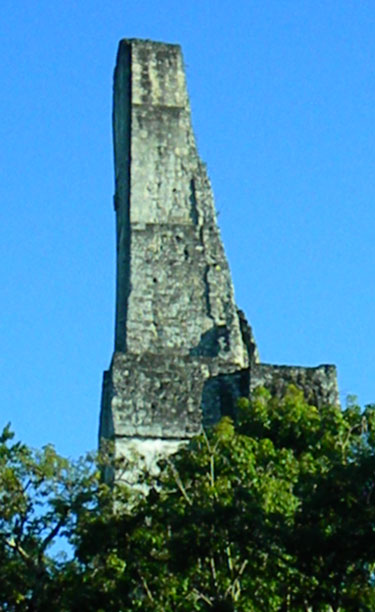
Temple?
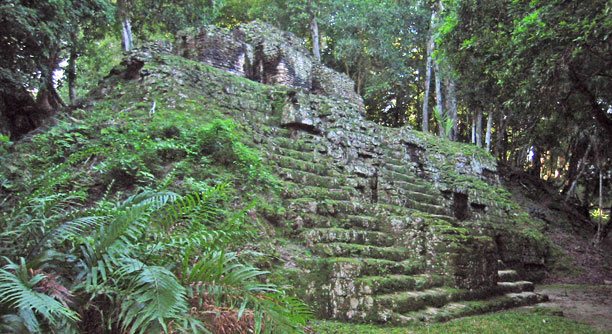
Plaza de los Siete Temples (17) being renovated panorama

Plaza de los Siete Temples (17) being renovated (continued)
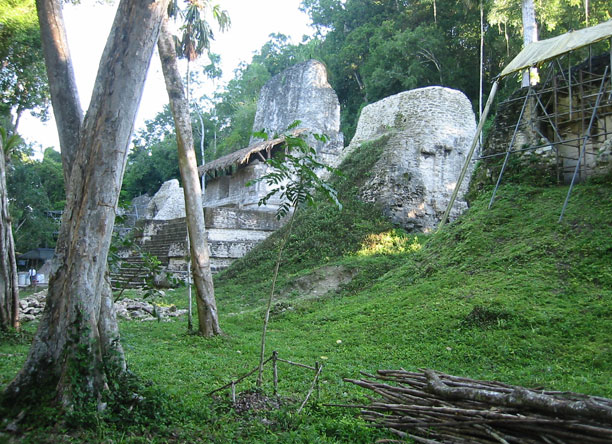
Back of Plaza de los Siete Temples (17) being renovated
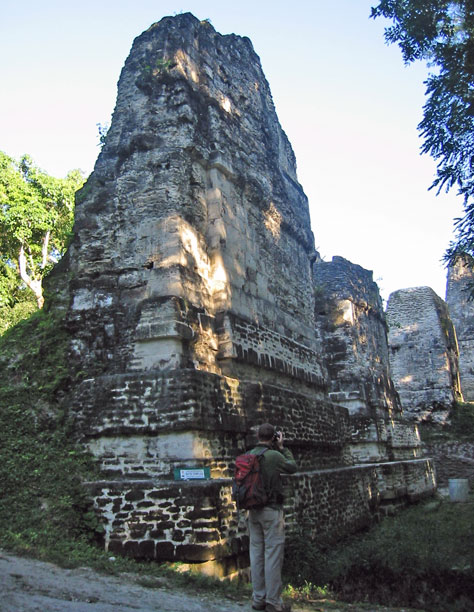
Back of Plaza de los Siete Temples (17) being renovated (continued)
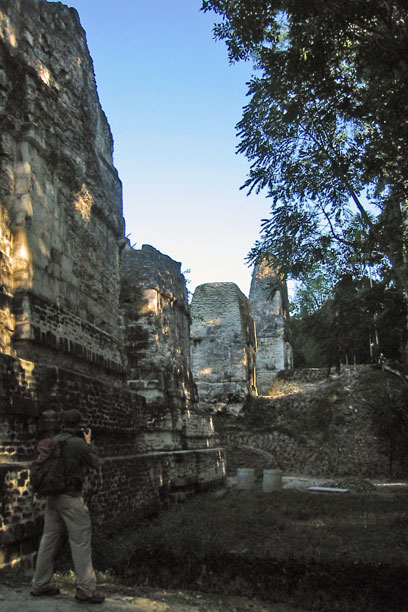
Temple near or part of Plaza de los Siete Temples (17)
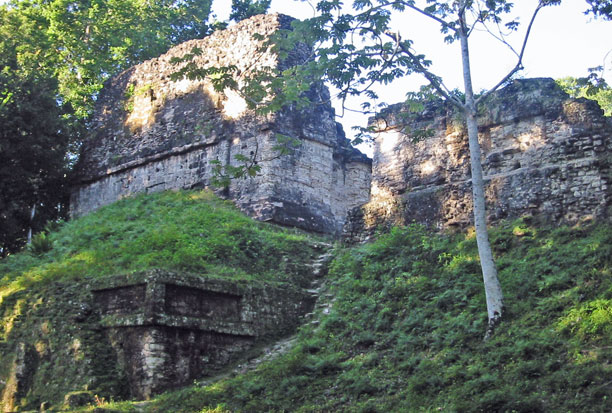
Another temple being renovated near or part of Plaza de los Siete Temples (17)
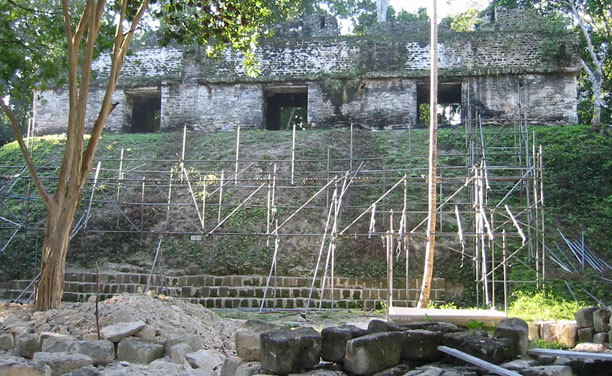
Structural steps of Temple V (19)
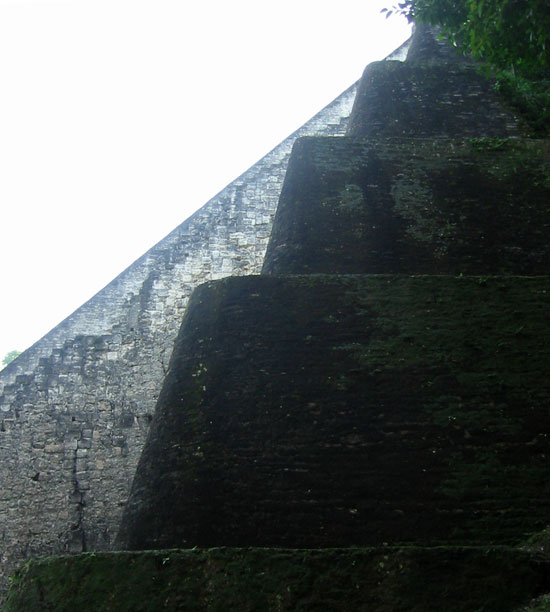
Angles
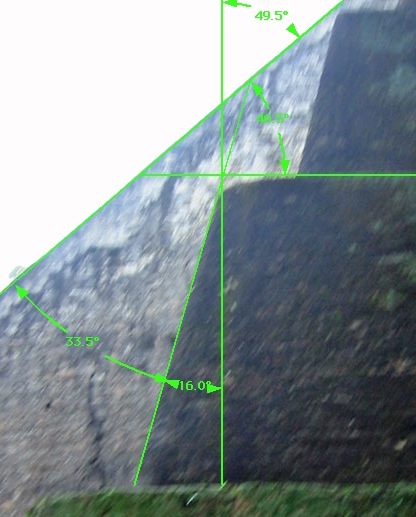
Temple V (19)
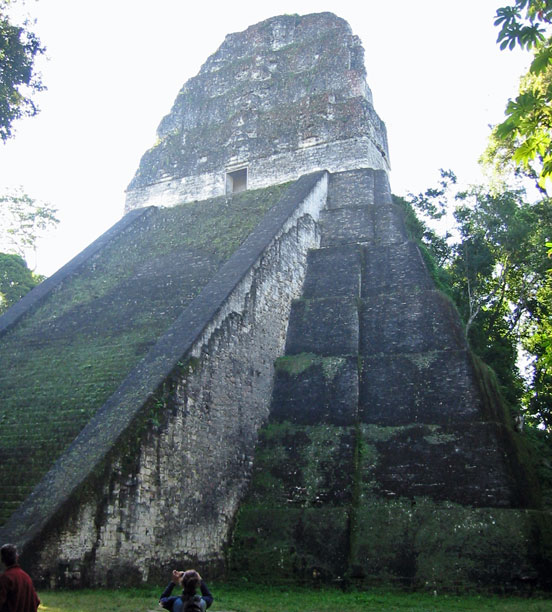
Bird
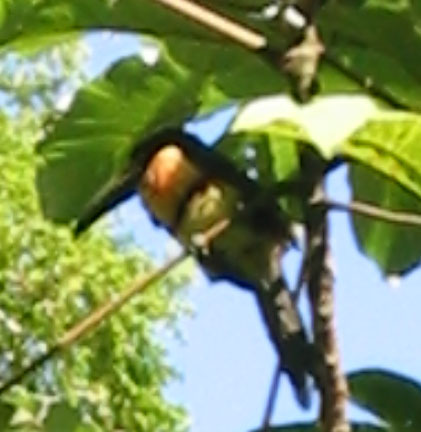
Temple V (19) ladder
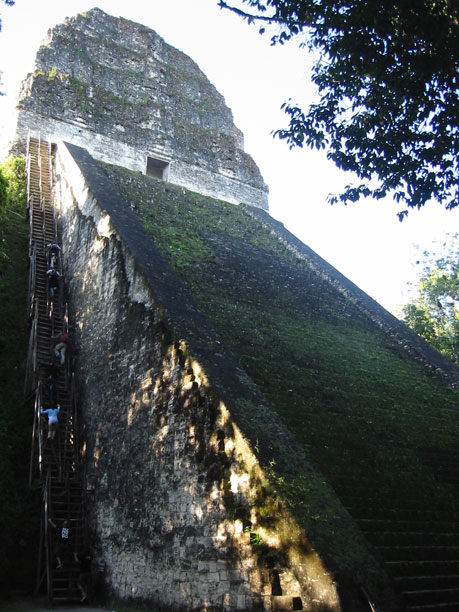
On to the main plaza